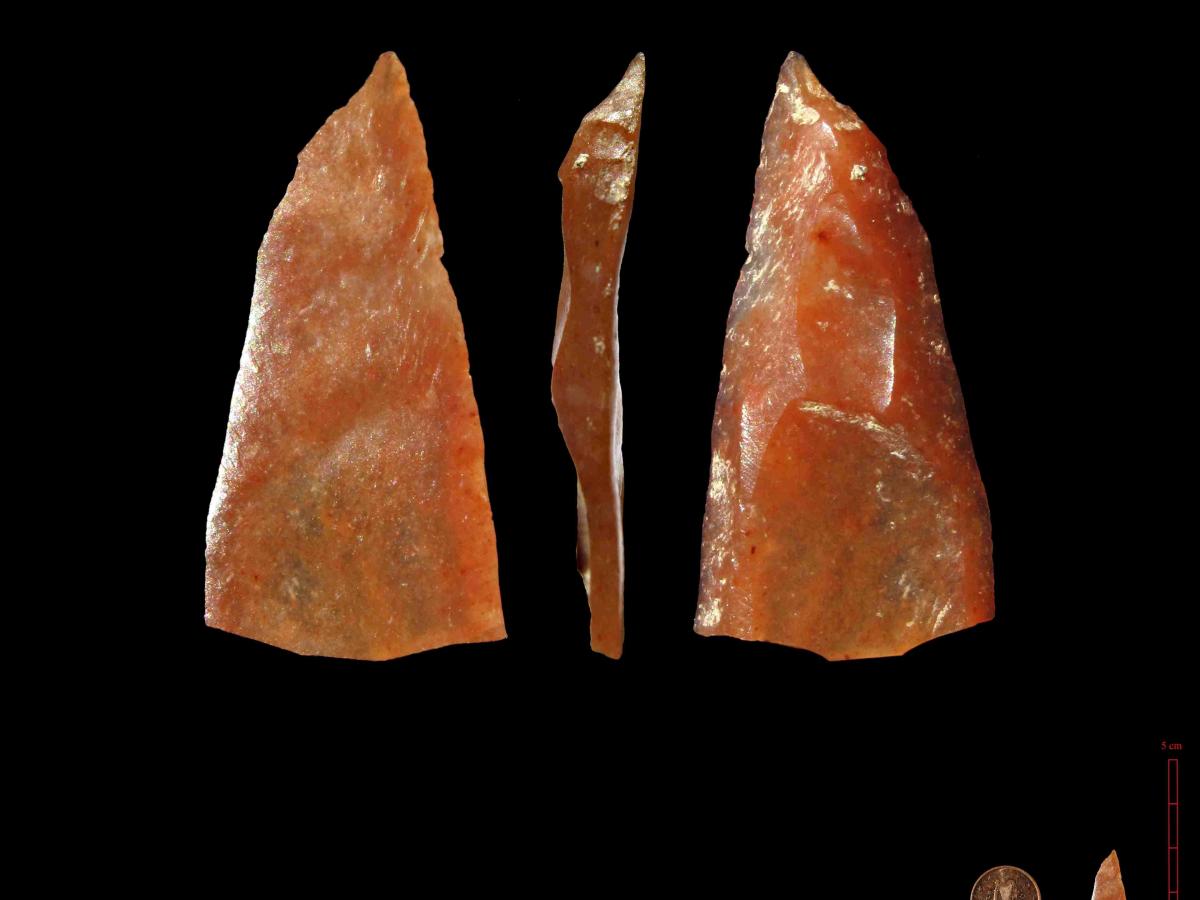
Grotte Mandrin Copyright Slimak. Nanopoint of the Modern Neronian technologies (about 20mm). 1 :1 scale and enlargement. Visual scale is 1 eurocent. Photo: Ludovic Slimak.
An international research team including scientists from the University of Adelaide has found evidence of human occupation in Europe almost 10,000 years earlier than previously documented, a discovery that stands to rewrite modern human and Neanderthal histories on the continent.
In a study published in Science Advances and led by Toulouse University, France, the authors dated distinctive stone tools and remains belonging to Homo sapiens (modern humans) discovered in a cave in southern France to 54,000 years ago. Until the discovery it was believed Neanderthals occupied Europe exclusively until 45,000 years ago, the date of the previous oldest fossils of modern humans.
The artefacts were found by a team of archaeologists sifting through layers of soil in the cave, known as Grotte Mandrin, with each layer representing a different time period.
Co-author Dr Martina Demuro from the University of Adelaide's Environment Institute said: "It was a great surprise to the team when a modern child's tooth and stone tools, which in no way were associated with Neanderthals, were discovered in a soil layer dating back to 54,000 years ago."
"This study drastically changes our knowledge about when modern humans strayed outside of their territory and into Europe, with the timing of this event at Grotte Mandrin being corroborated using multiple dating techniques, including single-grain dating of sediment performed at the University of Adelaide."
The new discovery provides archaeological evidence that the two species may have coexisted in the same region of Europe during the same time period. While there is no evidence of a cultural exchange between the two species who alternated occupation of the cave, the findings challenge the idea that modern humans replaced Neanderthals in Europe overnight.
"The new data tells us that the replacement of indigenous Neanderthal groups was not as straightforward as previously thought, but rather a complex historical process during which both populations replaced each other rapidly or even abruptly perhaps several times in the same territory."Dr Martina Demuro, the University of Adelaide.
The findings have major implications for understanding the spread of modern humans and our interactions with the Neanderthals. It also fits in with the discovery made in 2010 that modern humans have a small amount of Neanderthal DNA, which indicates that the two species interbred.
Associate Professor Lee Arnold from the University of Adelaide's Environment Institute who also a co-authored the study said: "Learning about the overlap between modern humans with other ancient ancestors such as Neanderthals and Denisovans is imperative in solving the mystery of their disappearance."
"The events surrounding the extinction of Neanderthals in Europe 45,000 years ago remain unknown, along with what role modern humans played in their downfall.
"That's why new discoveries like this one are so exciting for us geochronologists and anthropologists, because they have the ability to completely flip history on its head."






